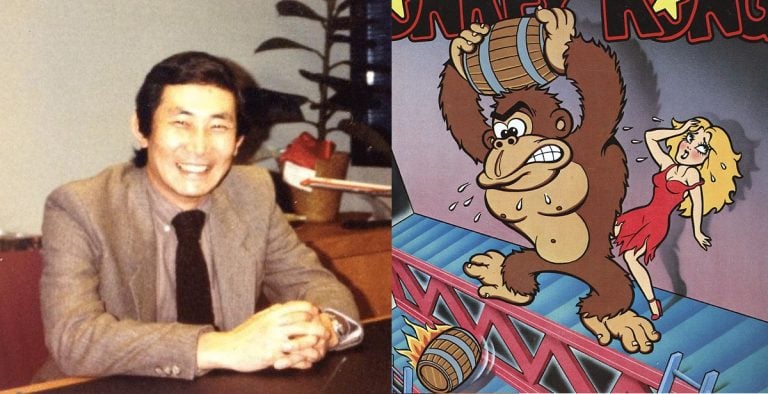With upcoming titles such as The Legend of Zelda: Tears of the Kingdom and Starfield, 2023 is shaping up to be a year chock-full of games that tout their high degree of freedom as a selling point. But while these kinds of games provide a high degree of freedom to players, they all have completely different gameplay systems. So why is it that these titles are all lumped together as “games with a lot of freedom” when they differ so greatly in content? In this article, we will look at what causes a game to feel like it provides a high level of freedom.
Our exploration begins with the hypothesis that games which use player freedom as a selling point likely contain some common elements. First, we will provide three examples of game design that make players feel like they have a high degree of freedom before looking at the elements that are shared among all three.
Of course, a sense of freedom is a subjective concept, so we will not attempt to provide a concrete definition as to what player freedom is. What we are hoping to do is to find certain characteristics that are prevalent in games that use a high degree of freedom as a selling point.
1. Game design that allows players to use many different methods to solve each challenge they are presented with
We players tend to feel a lot of freedom when there are many different ways to complete a game. In something like an action RPG, it’s not just about the variety of weapons or the diverse attack patterns; you feel a sense of freedom when there are multiple paths that you can take through the game, or when there is no defined way to complete the game to begin with. In a raising sim, it’s the number of methods you can use to raise your characters/pets and the range of possible variations in their growth. For a puzzle game, the more solutions there are to a problem, the greater the sense of freedom for the player.
However, it’s important to note that it’s not as simple as just having a lot of different options in how to beat a game—a player has to feel like there is some kind of value in the choice that they have made. In other words, even if a player wonders what would have happened if they chose a different option, the game needs to make sure that all possible choices will still make the player feel self-assured about what they did choose. There are many RPGs and roguelites that create this sense of value by incorporating the concept of permanent growth, where once a character has improved in some way, it is impossible for them to revert to their previous state.
2. Game design that allows players to control their progression through the game
There is merit in giving players the ability to choose the timing of when they complete a game, and you can certainly feel a sense of freedom in games that let you tailor your own personal story experience. Titles that adopt this approach include diversions unrelated to completing the game, such as minigames and sub quests, and differ greatly from games that use linear, stage-based systems. These diversions give rise to story experiences that occur outside of the main narrative and provide value even when the player is not progressing through the game. With this kind of game design, the story can change based on the voluntary decisions of the player.
Among games such as these, there are those that can be thoroughly enjoyed even if players never complete them. Not only RPGs, but also many crafting and simulation games embrace this kind of design. By leaving the decision to progress in the hands of the player, it mitigates the feeling of being forced toward the game’s ending, and instead creates the sense that the player—in the role of the protagonist—is moving forward of their own accord. This suggests that player agency is linked to a sense of player freedom.
3. Game design that features few rules
Generally, games have many rules that players must abide by. For example, being prevented from attacking NPCs. Some games reduce the amount of these rules in order to let players perform a wider range of actions and give them a sense of freedom.
The main characteristic of this kind of design is that it blurs the line between the game and reality by creating the impression that the player’s intentions and feelings are being acknowledged by the in-game world. The sense of reality largely holds true even within the game. However, the rules of reality differ to those found in games. This means that you can feel a high degree of freedom within a game by comparing it with reality. You are given the sense that things which are essentially possible in real life but can’t be done due to various limitations can be performed within the game. For example, MMORPG players tend to form in-game organizations, cultural activities, and services that act just like they would in reality.
So what is it that creates a sense of freedom?
Now let’s look at the elements that our three styles of game design have in common. The first thing we can understand is that all feature in-game elements that can be controlled by the player, and there is some kind of value associated with every result caused by an action. When the player can choose whether or not to perform an action, and they can see value in each possible result, they will surely feel a sense of freedom.
The influence of this element is obvious in game design style 1, but it is also present in 2 and 3. The important thing is that each result must provide some kind of merit, but such merits are not limited to things that are beneficial within the game. For example, in Grand Theft Auto V or The Witcher 3: Wild Hunt, attacking an NPC and being pursued by enemies is seen as a detriment when only looking at things from within the game, but if the player’s intent is to play as a “bad guy,” then the merit of being able to play that way is certainly present.
Another common aspect of our three game design styles is that few instructions are provided to the player, and they are made to feel like they are not following the rules of the game. To put it another way, even if clearly defined rules exist, the games are structured so that players never get the feeling that they are following these rules.
To sum up, we can consider the two major elements that give the sense of a high degree of freedom to be (a) there are in-game elements that can be controlled by the player, and some kind of value is associated with every result caused by an action; and (b) few instructions are provided to the player, and they are made to feel like they are not following the rules of the game.
If you observe the content of games that are said to have a high degree of freedom, you will see that they contain elements designed to stir the player’s emotions in various ways, and you will discover the secret of the concept that is known as player freedom. It is sometimes said that play is a microcosm of society, and investigating a component of a game may not be all that different to thinking about the very world that we all live in.
Translated by. Marco Farinaccia based on a script written for AUTOMATON JP’s YouTube video





